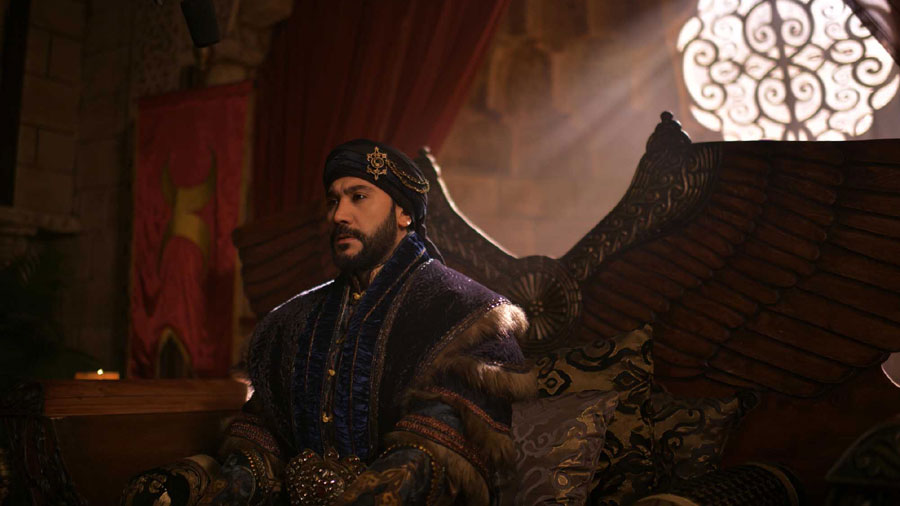Who Was Selahaddin Eyyubi??

Selahaddin Eyyubi: The Hero of Ummah (Conquest of Quds)
Saladin (or Selahaddin Eyyubi, in Turkish) is a name that resonates throughout history as a symbol of military prowess, chivalry, and religious devotion. He was the founder of the Ayyubid dynasty, and his most famous accomplishment remains the reconquest of Jerusalem (Quds) from the Crusaders in 1187, an event that made him a legendary figure in both the Islamic and Western worlds. His victory over the Crusaders was immortalized in many historical accounts, including The Conquest of Quds, which provides a detailed narrative of his military campaigns, leadership, and his pivotal role in reshaping the political landscape of the Middle East.

Early Life and Rise to Power
Born in 1137 in the town of Tikrit, located in present-day Iraq, Selahaddin was a Kurdish Muslim of noble descent. His family, the Ayyubids, initially hailed from a small region in northern Iraq. His father, Najm ad-Din Ayyub, was a military leader under the Zengid dynasty, which ruled parts of Syria and Iraq. His early education and training were deeply rooted in Islamic scholarship and military strategy, which later became crucial elements of his leadership.
At the age of 14, Saladin joined his uncle, Asad ad-Din Shirkuh, a prominent general in the service of the Zengid ruler Nur ad-Din, during his campaigns. Saladin quickly gained recognition for his intelligence, tactical ability, and loyalty. After his uncle’s death in 1169, Saladin succeeded him as the vizier of Egypt, a region that had fallen into disarray after the weakening of the Fatimid Caliphate. His rise to power was seen as a crucial turning point in the politics of the region, as he laid the foundation for his future conquest of Jerusalem.
The Vision of a Unified Muslim World
One of Saladin’s defining qualities was his vision of unity among the Muslim world. He sought to reunite the fragmented Muslim territories, which had been divided among various rulers and dynasties. By aligning himself with Nur ad-Din, Saladin worked toward his ultimate goal of creating a united front against the Crusaders, who had established a foothold in the Holy Land since the First Crusade (1096–1099).
In 1171, Saladin officially abolished the Shiite Fatimid Caliphate in Egypt, replacing it with Sunni Islam, aligning Egypt with the broader Sunni Muslim world. This move was seen as a political and religious realignment that would bring much-needed unity among Muslims in the region. Saladin also built alliances with other key Muslim leaders and consolidated power across Egypt, Syria, and even parts of Arabia.
Despite his military successes and political strategies, Saladin’s ultimate goal was always to liberate Jerusalem and protect Islamic holy sites. The Crusaders had captured Jerusalem in 1099, and it had been under Christian control for almost a century. Saladin’s aim was not only to reclaim the city but also to end the Crusader occupation that had brought suffering to the Muslim population.
The Battle of Hattin and the Conquest of Jerusalem
Saladin’s most famous military triumph came in 1187 with the Battle of Hattin. The Crusader forces, under the leadership of King Guy of Jerusalem, had grown weak and divided. The battle, which took place near the Sea of Galilee, was a decisive moment in the struggle for control over the Holy Land. Saladin, utilizing his military acumen and understanding of his enemies, laid a brilliant trap for the Crusaders. His forces managed to surround and annihilate the Crusader army, including King Guy, who was captured.
After the victory at Hattin, Saladin marched towards Jerusalem with the goal of liberating it from Crusader rule. The city, which had endured a brutal occupation for nearly a century, was under heavy siege. Saladin, however, showed remarkable restraint and compassion toward the city’s Christian inhabitants. Rather than massacring the population as was done by the Crusaders during their conquest of the city in 1099, Saladin negotiated a peaceful surrender. The Christians in Jerusalem were allowed to leave the city safely in exchange for a ransom or safe passage.
On October 2, 1187, Saladin entered Jerusalem as a conqueror, but unlike many historical conquerors, he showed mercy. The Holy Sepulchre, a sacred site for Christians, was returned to Christian control, and the city was treated with respect. Saladin’s actions garnered admiration even from his Christian adversaries, and his chivalric conduct became a hallmark of his leadership.
The Aftermath and Legacy of the Conquest
The conquest of Jerusalem by Saladin had significant repercussions both for the Muslim and Christian worlds. For the Muslims, it was a symbol of triumph over the Crusaders, and Saladin became a hero across the Islamic world. His reputation as a just and noble leader spread far and wide, and he became a symbol of resistance against foreign occupation.
For the Christian world, the loss of Jerusalem prompted the Third Crusade (1189–1192), which saw the arrival of notable European leaders such as Richard the Lionheart, King Philip II of France, and Emperor Frederick I Barbarossa. Despite several battles, including the famous Siege of Acre, the Crusaders were unable to recapture Jerusalem. In 1192, after years of fighting, both Saladin and Richard reached a truce. The city of Jerusalem remained under Muslim control, but Christian pilgrims were granted safe access to the city’s holy sites.
Saladin’s leadership during this period was marked not only by military victories but also by his ability to maintain unity among the diverse Muslim factions, his respect for religious diversity, and his focus on diplomacy. His conduct in battle and governance earned him widespread admiration, and his name became synonymous with chivalric values.
Conclusion: Saladin’s Legacy
Saladin’s legacy as a military commander and a ruler is indisputable. His conquests and his role in the Crusades remain one of the most fascinating chapters in the history of the Middle East. His reign marked the restoration of Muslim power in the region and helped shape the future of Islamic governance.
The Conquest of Quds illustrates Saladin’s strategic brilliance, compassion, and commitment to his religious and political goals. His story is a tale of perseverance, skill, and the relentless pursuit of justice. Even centuries after his death in 1193, Saladin’s legacy lives on in both the Muslim and Western worlds, where he is remembered not only as a conqueror but also as a symbol of moral leadership, tolerance, and the pursuit of justice. His impact on the Crusades and his role in the shaping of the Middle Eastern political landscape ensures that his name will continue to be remembered as one of history’s greatest military and political leaders.



